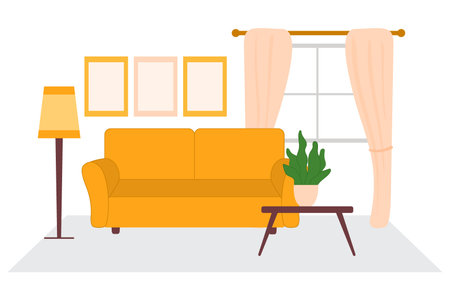Introduction: The Art of British Minimalism
Minimalism, when filtered through the distinctive lens of British culture, transforms into something more than just decluttered surfaces and neutral palettes. It becomes a quiet assertion of character, where restraint is not a lack of personality but rather an invitation to appreciate subtler forms of expression. In the UK, interior design has long been associated with a sense of understated elegance—think Georgian townhouses with their muted colour schemes, or Victorian terraces that blend tradition with clever use of space. Here, minimalism is not about emptying rooms, but about curating them: making thoughtful choices that reflect personal history and local heritage. The significance of this approach lies in its ability to create homes that feel lived-in yet refined, distinctly British yet universally appealing. By focusing on quality over quantity and layering in meaningful touches, British minimalism carves out spaces that are both functional and filled with quiet charm—a testament to the enduring appeal of less-is-more within a uniquely UK context.
2. Quintessential British Elements in Small Spaces
When working with limited square footage, infusing a sense of unmistakable Britishness requires both subtlety and intention. The secret lies in choosing the right blend of iconic motifs—think muted colours, time-honoured patterns, and heritage materials—that together evoke a sense of place without overwhelming the space.
Muted Colours: Understated Sophistication
The British palette is rooted in understated elegance, often inspired by the country’s misty landscapes and historic architecture. Soft greys, sage greens, and powder blues are perennial favourites, delivering a calm ambience while serving as the perfect backdrop for statement pieces.
| Colour | British Reference | Effect in Small Spaces |
|---|---|---|
| Sage Green | Cotswold countryside | Brings nature indoors; calming effect |
| Pewter Grey | London townhouses | Adds depth without darkness |
| Creamy White | Georgian interiors | Opens up the room; timeless feel |
Classic Patterns: A Nod to Heritage
No British interior is truly complete without a hint of pattern. Tartans, houndstooth, and delicate florals echo the nation’s rich textile tradition. In smaller homes, it’s wise to use these motifs sparingly—perhaps through cushions or an accent chair—to avoid visual clutter while still capturing that quintessential charm.
Heritage Materials: Texture with History
The tactile quality of British design comes alive through materials steeped in history—think tweed upholstery, wool throws, or even a touch of brass. Incorporating these elements in small doses (such as a Harris Tweed cushion or a vintage brass lamp) provides warmth and authenticity without crowding your living area.
Merging Motifs Seamlessly
The key is balance: layer muted colours with classic patterns and heritage textures to create depth and character. Even in compact spaces, these details can conjure the essence of a Bloomsbury flat or a Yorkshire cottage—proof that British flair thrives no matter the footprint.

3. Curating Character: Personal Touches Without the Clutter
Injecting British personality into a minimal space is all about thoughtful curation rather than accumulation. The secret lies in choosing a handful of meaningful pieces—mementoes, artwork, or accessories—that speak to your story and heritage, without overwhelming the room. Begin with items that have genuine sentimental value: perhaps a vintage teacup inherited from a grandparent, or an old cricket bat propped elegantly against the wall. These pieces bring depth and authenticity to your interior, transforming it from simply stylish to distinctly lived-in.
When it comes to art, opt for restrained but characterful selections. A single framed print of a classic London street scene, or even contemporary works by local artists, can set a tone of quiet sophistication. Remember, in true British fashion, understatement is key—let one piece breathe rather than filling every available surface. Accessories should be equally intentional; think wool throws in muted checks, or a well-chosen ceramic vase on a sideboard. Each element should earn its place through both function and emotional resonance.
The British knack for storytelling extends into their homes, often through subtle displays rather than grand gestures. A cluster of black-and-white family photos on a mantelpiece or a shelf lined with dog-eared Penguin Classics pays homage to tradition while maintaining visual clarity. By limiting your palette and grouping similar items together, you create vignettes that draw the eye but don’t disrupt the sense of order. This careful editing ensures your home feels personal yet remains refreshingly uncluttered—a hallmark of modern British minimalism.
4. Local Finds: Sourcing Sustainably and Uniquely in Britain
Injecting British character into a minimal space is as much about where your pieces come from as how they look. The secret to an authentic, eco-conscious home lies in spotlighting locally made decor, vintage treasures, and regional crafts that tell a story of place and heritage. When you choose items crafted within Britain—be it a hand-thrown Cornish ceramic mug or an upcycled Welsh wool blanket—you not only reduce your environmental impact but also foster a deeper connection to the culture around you.
Spotlighting British-Made Decor
British artisans and independent makers offer an array of homewares that balance minimalism with personality. Think simple earthenware from Staffordshire potteries, or elegant glass vases blown in the Scottish Highlands. These understated yet distinctive items serve as subtle nods to regional identity without overwhelming a pared-back scheme.
Vintage Shop Gems
The UK’s rich history of craftsmanship means charity shops, antique stalls, and vintage markets are treasure troves for unique finds. A mid-century Ercol chair or a retro Hornsea pottery jar can add both function and flair while honouring sustainable principles by giving pre-loved items new life.
Regional Crafts at a Glance
| Region | Signature Craft | Why It Works in Minimal Spaces |
|---|---|---|
| Cornwall | St Ives Ceramics | Organic shapes and earthy glazes add warmth without clutter |
| Wales | Traditional Wool Blankets | Soft textures provide visual interest on neutral sofas or beds |
| The Cotswolds | Limestone Tableware | Naturally muted tones complement minimalist palettes |
| Scotland | Hand-blown Glassware | Sleek forms double as functional art pieces on open shelves |
Supporting Local, Living Sustainably
Sourcing locally doesn’t just mean shopping close to home; it’s about supporting craftspeople who keep traditional skills alive. Whether you’re browsing Notting Hill’s Portobello Road for Edwardian trinkets or visiting rural workshops during Open Studios season, these thoughtful touches root your space firmly in its British context—proof that minimalism needn’t be impersonal when every piece comes with provenance and purpose.
5. Balancing Tradition and Modernity
If there’s one hallmark of British interiors, it’s the effortless weaving together of old and new—where a Georgian mantel might sit comfortably alongside a sleek, contemporary lamp. In a minimalist space, striking this balance requires intention and restraint but brings an unmistakable sense of Britishness to even the smallest flat or townhouse.
Preserving Period Features
Rather than stripping back every original element in pursuit of minimalism, consider which period features truly anchor your home’s character. Exposed beams, ornate cornicing, or a classic sash window offer texture and narrative without overwhelming the eye. When these heritage details are given breathing room amidst pared-back décor, their craftsmanship stands out as a living testament to history.
Curating Heirlooms and Antiques
British homes often hold a story in every corner—a grandfather clock ticking quietly in the hall, a battered leather armchair passed down through generations. Select just one or two heirloom pieces that resonate with you, allowing them to serve as focal points within your minimalist scheme. This selective approach preserves the soul of tradition while keeping clutter firmly at bay.
The Contemporary Counterpoint
To avoid creating a space that feels like a museum piece, introduce clean-lined furniture and modern materials such as glass, steel, or pale oak. Think of an Eames chair beside an antique writing desk or abstract art above an Edwardian fireplace. This juxtaposition is key to British eclecticism—it speaks to both reverence for the past and enthusiasm for the present.
Personal Touches: Storytelling Through Objects
Ultimately, blending tradition with modernity is about telling your own British story. Whether it’s displaying vintage teacups on floating shelves or using your great-aunt’s patchwork quilt as a throw, these carefully chosen accents imbue your minimalist home with warmth and individuality. In this way, each object becomes more than décor; it becomes part of an ongoing narrative rooted in both heritage and personal style.
6. Finishing Touches: British Rituals and Cosy Details
No matter how pared-back a space may be, it’s the subtle gestures – the gentle nods to ritual and comfort – that truly infuse it with British character. This is where the art of layering soft textiles comes into play. Think a well-placed wool throw, velvet cushion, or a classic tartan blanket draped over a minimalist chair. These tactile elements evoke a sense of warmth and tradition without overwhelming your aesthetic restraint.
The Tea Corner: A Quintessential British Custom
In even the smallest flat, carving out a dedicated tea corner instantly grounds your home in British culture. Whether it’s a vintage teapot perched on a slim shelf or an elegant tray with mugs at the ready, this simple arrangement signals hospitality and invites quiet moments of pause. For many, the ritual of brewing a cuppa is both daily comfort and cultural touchstone—a small but mighty personal touch.
Inviting Lighting: Setting the Mood
Lighting plays an unsung yet pivotal role in capturing that uniquely British cosiness known as ‘hygge’—or as we might say, ‘cosy’. Swap harsh overhead lights for soft-glow lamps or wall sconces; use dimmers to create warm pools of light that encourage relaxation. Even a single candle flickering on a windowsill can transform a minimalist room into an inviting haven reminiscent of countryside cottages or snug London flats.
Weaving It Together: Minimalism Meets Home Comfort
The secret to achieving British charm in minimal spaces lies in these finishing touches—thoughtful layers, beloved rituals, and pockets of warmth that turn streamlined interiors into lived-in homes. By blending personal tokens like textiles, tea stations, and ambient lighting, you ensure your minimalist space never feels cold or impersonal but instead carries the unmistakable mark of British individuality and homely spirit.


